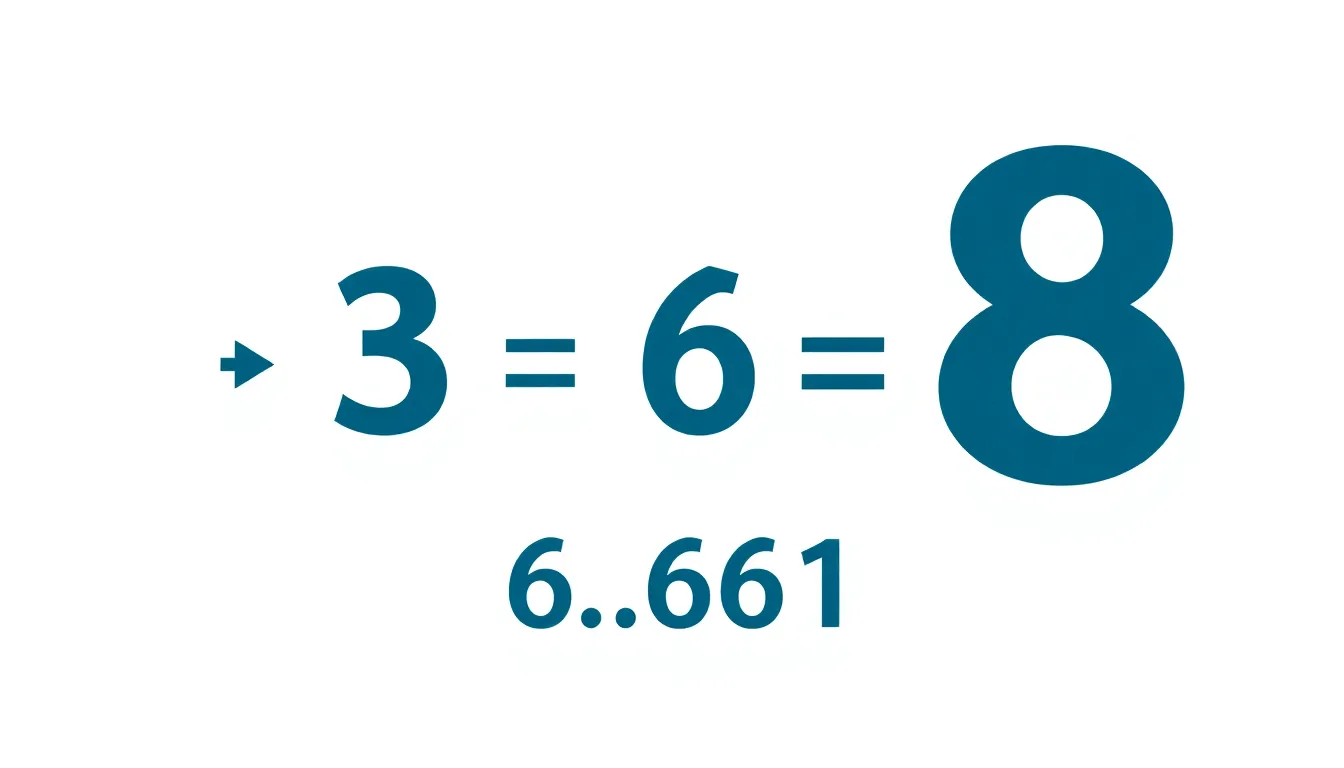When it comes to numbers, few can rival the sheer excitement of exponents, and “3 to the power of 8” is no exception. This seemingly simple expression packs a punch that could make even the most stoic mathematician crack a smile. Imagine taking the number 3 and multiplying it by itself a whopping eight times—it’s like a math party where the guest list is just one number but the fun multiplies exponentially.
Table of Contents
ToggleOverview of Exponential Numbers
Exponential numbers play a crucial role in mathematics, representing repeated multiplication of a base number. In the case of “3 to the power of 8,” the base number is 3, and it multiplies itself eight times, resulting in a significant value. Understanding exponents expands the comprehension of growth patterns, especially in fields like science, finance, and computer programming.
Roots of exponential numbers trace back to the fundamental principles of multiplication. Constants increase at a rapid rate based on their exponents; for instance, (3^2) yields 9, while (3^3) expands to 27. This fast growth illustrates why exponential functions are vital in modeling phenomena such as population growth or compound interest.
Evaluating “3 to the power of 8” means calculating 3 * 3 * 3 * 3 * 3 * 3 * 3 * 3. The result, 6,561, demonstrates the dramatic impact of even small base numbers when raised to higher powers. Various technologies utilize exponents in calculating data storage or encryption algorithms.
Exponent rules simplify operations with exponential expressions. For instance, multiplying two exponential numbers with the same base leads to adding their exponents, following the formula a^m * a^n = a^(m+n). Such principles allow mathematicians and scientists to manipulate large numbers more easily.
Engaging with the concept of exponentiation reveals its application in diverse fields. By grasping how exponents work, individuals can navigate complex situations with greater ease, making educated decisions based on exponential growth and decay.
Calculation of 3 to the Power of 8


Calculating “3 to the power of 8” involves multiplying the number 3 by itself eight times. Start with the base number 3. Then, sequentially multiply as follows:
- 3 x 3 = 9
- 9 x 3 = 27
- 27 x 3 = 81
- 81 x 3 = 243
- 243 x 3 = 729
- 729 x 3 = 2,187
- 2,187 x 3 = 6,561
After completing this process, the final result is 6,561, demonstrating the power of exponentiation in showcasing rapid growth.
Step-by-Step Process
Understanding the step-by-step process simplifies calculations involving exponents. Begin with the initial number, 3. Next, multiply it by itself repeatedly. Early steps reveal smaller products, while later stages yield larger figures, illustrating exponential growth effectively. Repeating this multiplication leads directly to the final answer of 6,561.
Importance of Exponents
Exponents play a crucial role in various fields, including science, finance, and technology. They help model complex phenomena like population growth and interest calculations. Recognizing how small changes in the base or exponent create significant effects emphasizes their relevance. In computational contexts, exponents enable efficient comparisons, making analyses more straightforward and impactful. Understanding this concept enhances one’s ability to interpret and engage with data effectively across disciplines.
Applications of 3 to the Power of 8
The expression “3 to the power of 8” finds relevance across various fields due to its significant value. Understanding how this exponent applies can facilitate problem-solving in real-life scenarios.
Real-World Examples
In finance, exponential growth appears frequently in compound interest calculations. For instance, an investment growing at a 300% return over a specific period illustrates this concept effectively. Technology often employs exponential functions to model data storage capacities, as the amount of information that can fit in devices like solid-state drives increases exponentially. Each unit of growth can represent larger datasets, showcasing efficiency. Populations also demonstrate exponential growth patterns, particularly in biology, where reproduction rates create large population sizes rapidly.
Its Role in Mathematics
In mathematics, “3 to the power of 8” serves as an example of exponential functions. This expression simplifies complex calculations in algebra, particularly in graphing scenarios. Understanding the fundamentals of exponents lays the groundwork for tackling more advanced topics, such as logarithms. Mathematical relationships, such as the power rules, build on this knowledge by allowing individuals to manipulate equations confidently. Evaluating functions often utilizes data derived from exponential expressions, which support calculations involving growth rates and decay scenarios.
Common Misconceptions
Many misconceptions exist about exponents and their calculations. A frequent misunderstanding centers on the idea that larger bases always lead to larger results. While bases play a role, the exponent’s size often holds more significance in determining the final outcome.
Another misconception involves confusing addition with multiplication when working with exponents. Some believe that adding the base together before exponentiation affects the result. In reality, for “3 to the power of 8,” the operation involves multiplying 3 by itself eight times, not summing the base first.
Exponents do not imply simple linear growth. They indicate exponential growth, leading to results that escalate rapidly. Observing operations such as “3 to the power of 8” showcases this phenomenon by producing 6,561, a significant number derived from repeated multiplication.
A further misunderstanding pertains to the notion that any base raised to the power of zero equals zero. Under the correct rules of exponents, any non-zero number raised to the power of zero equals one. This principle holds true regardless of the base’s value.
Some think that exponents form only a concept for academic use. Exponential growth appears in numerous real-world scenarios, such as population increases, finance models, and technological advancements. Recognizing these applications allows a deeper understanding of their importance across various fields.
Lastly, many believe that complicated exponent calculations require advanced techniques. In fact, familiarity with a few basic exponent rules simplifies even the toughest calculations. Mastering these fundamental principles allows individuals to navigate mathematical challenges with confidence and clarity.






